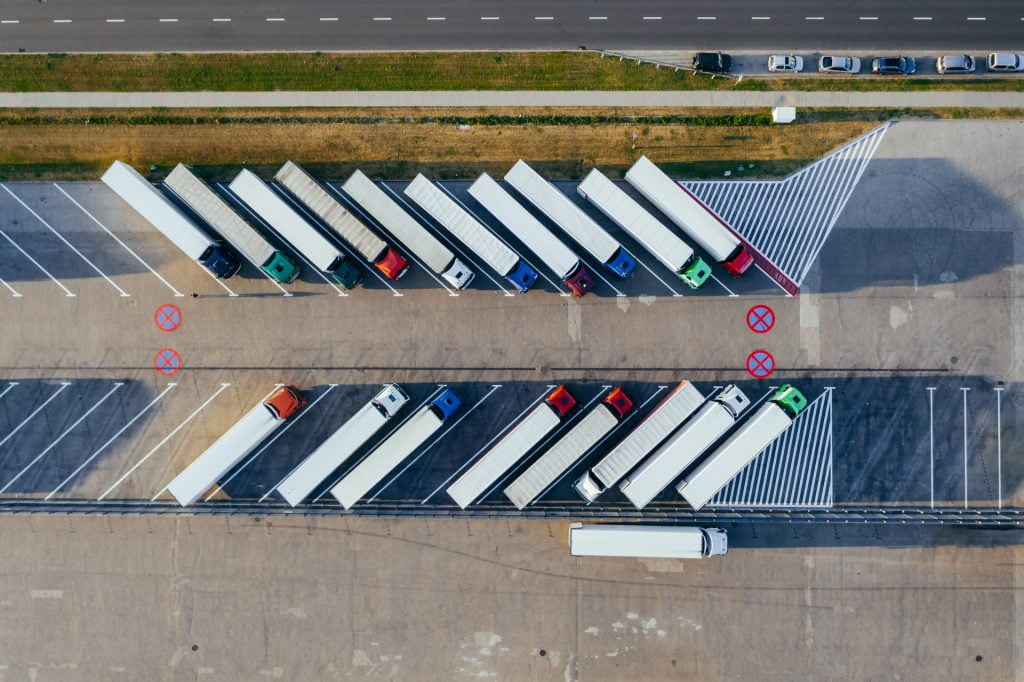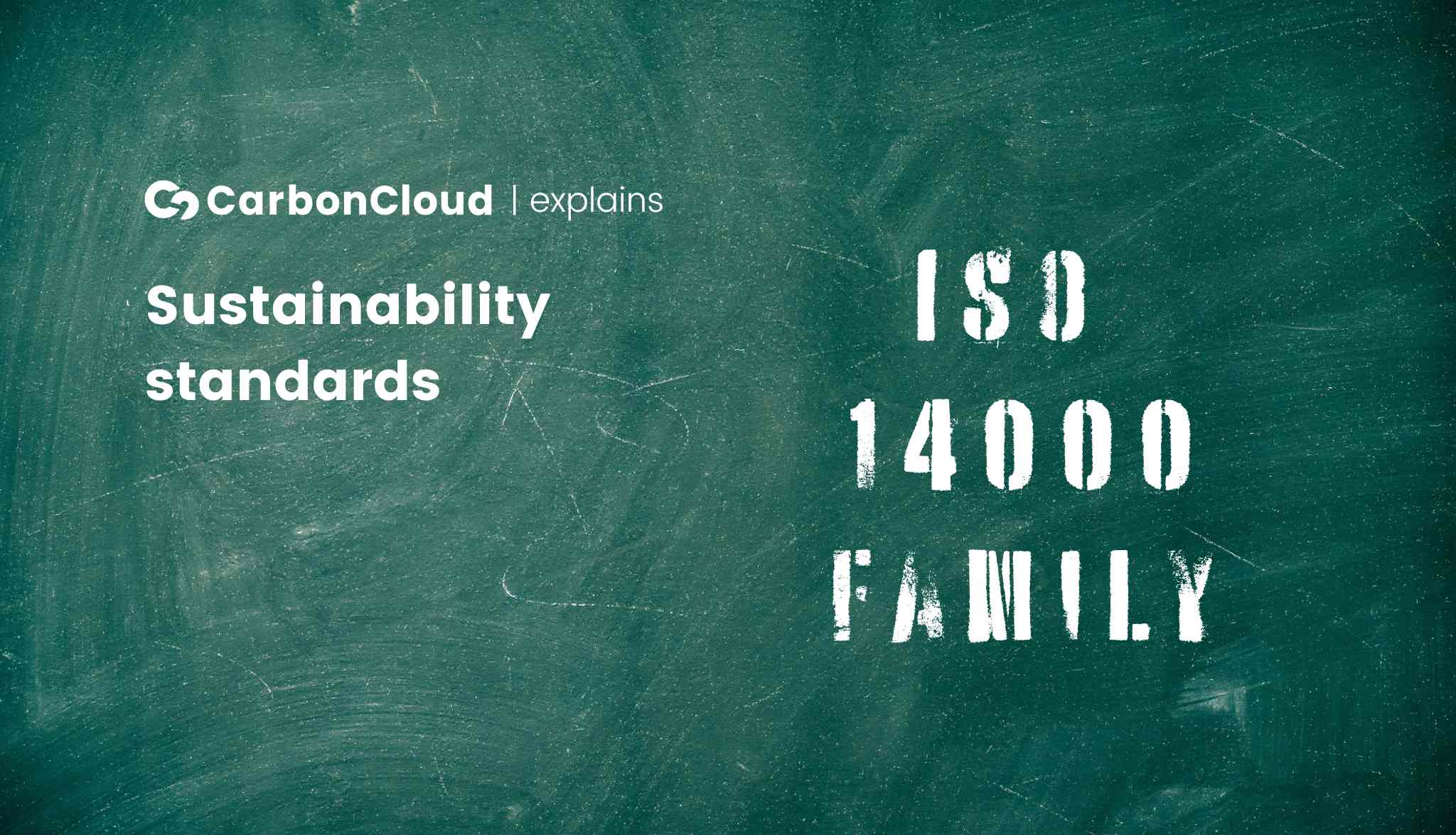Why do I need to climate-footprint my food products?
There are as many reasons to climate-footprint as there are food product owners… is what we wish we could say, but that’s not 100% true and we are not ones to generalize. The truth is that, while each food producer may have unique secondary reasons to go climate-transparent, there is a list of objective reasons why climate-footprinting your food products is a business-critical move that applies to all food product owners.
Perhaps you recognize your organization in some of them; perhaps some of them are panic-inducing; others may give you some inspiring ideas. What is important to remember is that it is never too late to start – in fact, the timing is perfect. New Year, New You, right? Here are 7 benefits the new, best version of you can leverage with climate-footprinting your food products.
1. Future-proof your business
A future where a climate strategy is an integral part of business development and operations is a breath away. Climate footprints are becoming factors in business decisions and an organization-wide KPI. Organizations not preparing for this shift now cannot respond quickly enough to maintain control over the process and own their segment in the very near future.
2. Documentation for certifications
Apart from knowing your climate footprints and understanding the most emission-heavy parts of your value chain, you may want to enlist your organization for climate certifications such as B CORP or Science-based targets (GHG protocol). Climate footprints from CarbonCloud cover Scope 1,2, and 3 and provide you with compliant technical reports for each product that motivate the choice of scope and methodology and document your emissions in detail. Ready for the best part? These reports are automatically generated from CarbonCloud.
3. Respond to stakeholders up-top
Neither retailers, banks, nor investors are waiting for legislation to be in place: They are already demanding a climate strategy and transparent communication of climate performance from food brands – as well as a plan to lower emissions. Knowing and understanding the quantity and origin of your emissions throughout the value chain is your strongest tool to prepare your response and craft an effective climate strategy.
Newsletter to-go?
Our special today is our Newsletter, including snackable tips, hearty climate knowledge, and digestible industry news delivered to your inbox
4. Respond to consumer demand
The climate-sensitive trend in consumer attitudes is growing quickly. It is not only the younger generations demanding climate transparency – it is everyone and they are willing to pay top buck for it. Consumers have already bought in on climate transparency but the information from food brands is not readily available to them. Moreover, they are savvy enough to tell greenwashing from the real deal.
What this tells me is that this brand works at being climate-transparent, they must understand the problem and they probably have a plan to do something about it in the next 5-10 years. I just became very skeptical of brands that do campaigns like ‘less packaging, xx% less CO2’ – if you see the overall footprint, that’s a decrease of 5% tops.
– CONSUMERS, KNOWVEMBER POPUP STORE
5. Claim a premium price
As mentioned, consumers are willing to pay top buck for climate-smart and transparent products. They are voting with their wallet for companies that commit to lowering their climate footprint. Moreover, retailers have quickly picked up on that info and leverage it already. A climate-transparent product bearing its climate footprint has the highest chances of being included in a premium spot with justified premium pricing. The answer to ‘What am I getting as an extra’ is evident on the climate footprint label.
I was expecting our retail partner to be intimidated by this, but they thought it was great! They set out to challenge their other suppliers into disclosing their climate footprints and it is really encouraging!
Robert Malin, CEO & founder at When In Rome
6. Steer away from greenwashing
The climate conversation is now on the mainstream, consumers are educated and can tell greenwashing from the real deal. Statements like ‘climate neutral’, carbon offsetting as a selling point, and proclaiming ‘green’ on an evaluative overall sustainability performance bring more consumer scrutiny than support. Greenwashing is looking the other way and claiming the problem is solved. Transparency is acknowledging our climate footprint – and committing to lowering it.
It is time to take down the Taskforce on Corporate Scams.
— Greta Thunberg (@GretaThunberg) November 3, 2021
Polluting profiteers see offsetting as their “get out of jail for free card” in the climate game.
But offsetting is often a dangerous climate lie.
2/5
This is the most important point: You need to climate-footprint your products to lower your emissions and do your best part in solving climate change. Climate footprints show you exactly how much your value chain emits, at what stage, for each product. This means that you know and understand your emission-heavy processes and you are informed to proceed with making the business decisions to minimize them. With a climate footprint for each product, you essentially have a roadmap for your climate strategy.
More food companies need to put equitable climate footprint labels on their products and then we can all build up awareness. The food industry accounts for approximately 25% of the global greenhouse emissions. If we can reduce that to 15% or 20% that would make a huge difference. But to do that, we need to help consumers make climate-smart choices. For me, printing the climate footprints of each product is the way of helping them and ourselves as food brands. I just became very skeptical of brands that do campaigns like ‘less packaging, xx% less CO2’ – if you see the overall footprint, that’s a decrease of 5% tops.
– ANNIKA HANSSON, SUSTAINABILITY REPORTING SENIOR MANAGER, OATLY
Convinced enough to explore climate footprints in-depth? Get yourself a warm beverage and enjoy the insightful analysis from our CEO, David Bryngelsson on what climate footprints can do for your food brand – and what they have been doing for our customers.
Even more ready than that? Get in touch and let’s get started!
This shan't take long...
Ready to meet your portfolio emissions? Let us automate it
Getting started is hard – Simplify it with Automated mapping and jump straight to the action. Reach out to our climate performance experts and see how you can jumpstart your climate strategy.
Related Posts
The great debunking of climate myths: Transportation
Enjoy this ribeye steak, friend! Yes, its carbon footprint is infamously high but don’t worry; I buy all my beef from local farmers.Hey roomie, when you get to the grocery store, get the local tomat
Triumf Glass boosts its sustainability work through collaboration with CarbonCloud
Triumf Glass and CarbonCloud partner up towards a more sustainable future. Through CarbonCloud’s research-based software service, Triumf Glass boosts the transparency of its carbon footprint all
Sustainability Standards Explained: ISO 14000 family
Nothing says Standards like the International Organization for Standardization, also known to the business community as ISO. ISO is a popular and globally credible provider of standards for pretty muc
‘Best in class’ comes with the burden of proof
A climate footprint assessment can be done for many different reasons and with different levels of ambition. Climate change is a serious problem. It is now getting the merited spotlight, and we cannot







